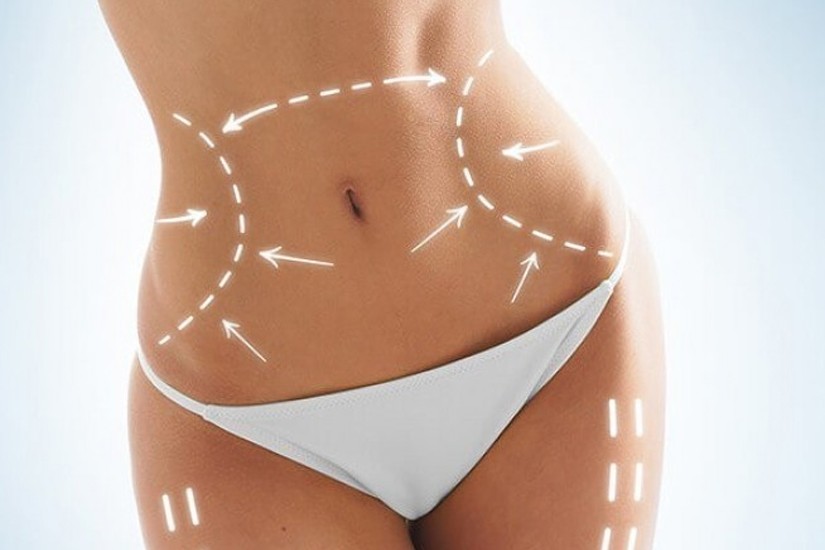
Liposuction method has been used successfully for years to remove excess accumulated and unwanted fat in various parts of the body and continues to be used successfully. New searches have been made due to the high amount of bruising and swelling that occurs after liposuction surgery, the fact that liposuction often requires general anesthesia and therefore can be performed under hospital conditions. In recent years, laser devices used in various fields of medicine have been added to the Liposuction process. Laser Lipolysis (fat melting with laser) devices have been developed, which have been tried and are quite successful in melting unwanted excess fat. The main effect in laser lipolysis (also called laser liposuction) is the melting of fat in unwanted areas with the effect of laser beam (photothermal effect). This process bursts the cell membranes of fat cells and destroys these cells. It eliminates the possibility of fat depositing again in the operated area. Apart from the effect of melting accumulated fat under the skin, a very important feature of the laser is that it reduces skin laxity. During the procedure, laser energy applied to the inner surface of the skin activates cells called fibrocytes, which are connective and support tissue cells under the skin, and ensures the production of collagen (photostimulation effect). With this effect, laser application can be used effectively to reduce skin laxity in areas that do not have excess fatty tissue and do not require liposuction (such as the abdomen, inner legs, under the chin, inner arms).
The laser beam is transmitted under the skin through very thin rods called fibers, and the way these fibers enter the skin is therefore very small and only a few millimeters in size. The fact that laser lipolysis application is less traumatic (mini-invasive) allows it to be applied under local-regional anesthesia even in very large areas. Thanks to this feature, application can be performed without the need for hospital conditions.
DIFFERENCES AND ADVANTAGES OF LASER LIPOLYSIS FROM LIPOSUCTION
In the Laser Lipolysis process, the injured area on the skin entered into the body is quite small. The laser fibers sent to the fat layer under the skin through a 2-3 mm long incision on the skin are very thin and cause very little injury in the procedure area. Apart from this, bleeding in the capillaries is prevented by the laser effect, so bruising and edema that may occur in the surgery area are much less common than in liposuction surgery. For this reason, the duration of wearing a corset after surgery is much shorter compared to Liposuction surgery. The fact that it reduces skin sagging in the applied area and that the Laser lipolysis process itself does not cause skin laxity is the reason for preference for the use of Laser lipolysis. Other advantages of Laser Lipolysis surgery compared to Liposuction are that the patient does not need to be hospitalized, that there are no undesirable effects and risks of general anesthesia, and that there is very little loss of work force. Its disadvantage is that it can be applied to small areas at a time, considering that application under local anesthesia is generally preferred. If application under general anesthesia is considered, this disadvantage is of course eliminated. If the desired result is desired to be seen immediately after the application, the laser Lipolysis-Liposuction combination should be preferred.
APPLICATION AREAS OF LASER LIPOLYSIS
Laser Lipolysis can be applied to any area where there is unwanted fat stored under the skin and causing disfigurement. When the advantage of being applied under local anesthesia is desired, it is primarily used for treatment purposes, especially in the under chin and neck area, upper arm, legs and inner parts of the knee, on the sides of the hips, in the lower parts of the belly, on the sides of the abdomen, in gynecomastia cases seen in men. It can also be used to reduce skin laxity in all these areas we mentioned.
RECOVERY AFTER LASER LIPOLYSIS AND RETURN TO SOCIAL LIFE
One of the most important features of the Laser Lipolysis process is quick recovery and low labor loss. Compared to liposuction surgery, it provides a significant advantage in terms of recovery speed, especially in interventions performed on visible areas. Laser Lipolysis melts and destroys some of the fat cells in the applied area and reduces the possibility of bleeding by affecting the capillaries that may cause bleeding, thus reducing swelling and bruising in the area. Apart from this, the fact that the laser fibers used and the cannulas carrying them are very thin minimizes injury in the surgery area and reduces undesirable developments such as edema and ecchymosis that may occur there. Patients can usually return to work within 2-4 days, depending on the width of the treated area and the work they do.
Depending on the area treated, patients are recommended to wear a corset for 3-4 weeks after the procedure.
ARE THE RESULTS OBTAINED WITH LASER LIPOLYSIS PERMANENT?
Laser Lipolysis and Liposuction applications in the applied area






